Tools for Lawn Aeration Boost Lush Green Grass
Ever run the mower over your yard and feel proud?
I used to think my mower did it all.
But most grass fights for breath when the soil is packed tight.
Imagine trying to sleep on a rock-hard mattress with no pillow.
Roots feel just as squished, no air, no water, no room to grow.
And have you noticed rain sliding off like a kid down a slide?
It pools in low spots or floods the driveway.
Your grass ends up thirsty even after a storm.
Time for aeration (making small holes in the soil so roots can breathe).
Those long tines (thin metal spikes) make tiny holes for air, water, and nutrients to slip in.
By the way, my dog thinks those little holes are perfect for some digging fun.
But let’s get back to aeration.
In this post, I’ll walk you through the aerator options.
You can pick simple hand tools that cost just a few bucks or try a plug machine (a tool that pulls out small soil plugs).
Choose what fits your budget and yard size.
Your grass will wake up soft, green, and ready to thrive.
Quick Decision Guide for Lawn Aeration Tools
Do you have a small yard, say under 2,000 square feet? A manual core aerator (a tool that pops up soil plugs so air and water can reach your grass roots) usually costs less than $100. It’s a wallet-friendly choice if you don’t mind a bit of elbow grease.
But if you want to power through the task, electric or gas aerators in the $300–$800 range are your go-to. They work faster and save your back.
| Tool Type | Lawn Size | Key Benefits | Drawbacks | Typical Price Range |
|---|---|---|---|---|
| Manual Core Aerator (pops up soil plugs) | Up to 2,000 square feet | Budget-friendly | Can get tiring | $50–$100 lawn aeration cost |
| Spike Aerator Shoes (spiked shoes you walk in) | Up to 2,000 square feet | Super cheap DIY | Holes stay shallow | $20–$40 lawn aeration cost |
| Electric Plug Aerator (power-cord machine) | 2,000–5,000 square feet | Makes even holes | Cord limits range | $300–$500 lawn aeration cost |
| Gas-Powered Walk-Behind Aerator (gas-engine machine) | Over 5,000 square feet | Drills deep holes quickly | Needs regular maintenance | $500–$800 lawn aeration cost |
Manual Lawn Aeration Tools and Applications
If your lawn feels like concrete, it’s time to loosen up that soil. Manual aerators are simple tools you step on, twist, or even wear – each one pokes fresh air holes. Here’s what to look for:
- Mechanics: how the tool makes holes in the soil.
- Effort: from grab-and-go to full-on workout.
- Hole depth: tiny 1-inch punctures or 4-inch plugs.
- Lawn size: small patches, medium yards, or spot fixes.
- Care: cleaning off dirt, sharpening prongs, and storing.
Manual core aerator (hollow tine aerator, tool with hollow metal spikes) uses tube-shaped prongs to yank out 2–4 inch plugs of earth. You step on its foot bar, push it into the ground, then lift up. It’s a bit of a workout, but your grass roots will love the extra air. Perfect for lawns up to about 2,000 sq ft, just wipe off mud and sharpen the tines now and then.
Solid tine spike aerator (tool with solid metal spikes) drives spikes 1–2 inches deep without removing plugs. You press or twist it by hand, easy on your back but shallower holes. It’s best for lawns that aren’t too compacted. And when you’re done, a quick rinse keeps it ready for next time.
Garden fork aerator (pitchfork-style tool) tackles stubborn spots with 4–6 inch prongs that you push into clay or high-traffic areas. Then rock it back and forth to break up the soil. Great for patchy turf, just brace yourself for an arm workout. Keep the handle dry and store it inside to avoid rust.
Aerator shoes strap onto your boots so every step pokes around 1-inch holes. Stroll through your yard and aerate as you go. They’re perfect for tiny spaces or when you’d rather walk than bend. Low cost, low fuss, just hose off the spikes when you’re finished.
Motorized Aeration Options for Efficient Lawn Care
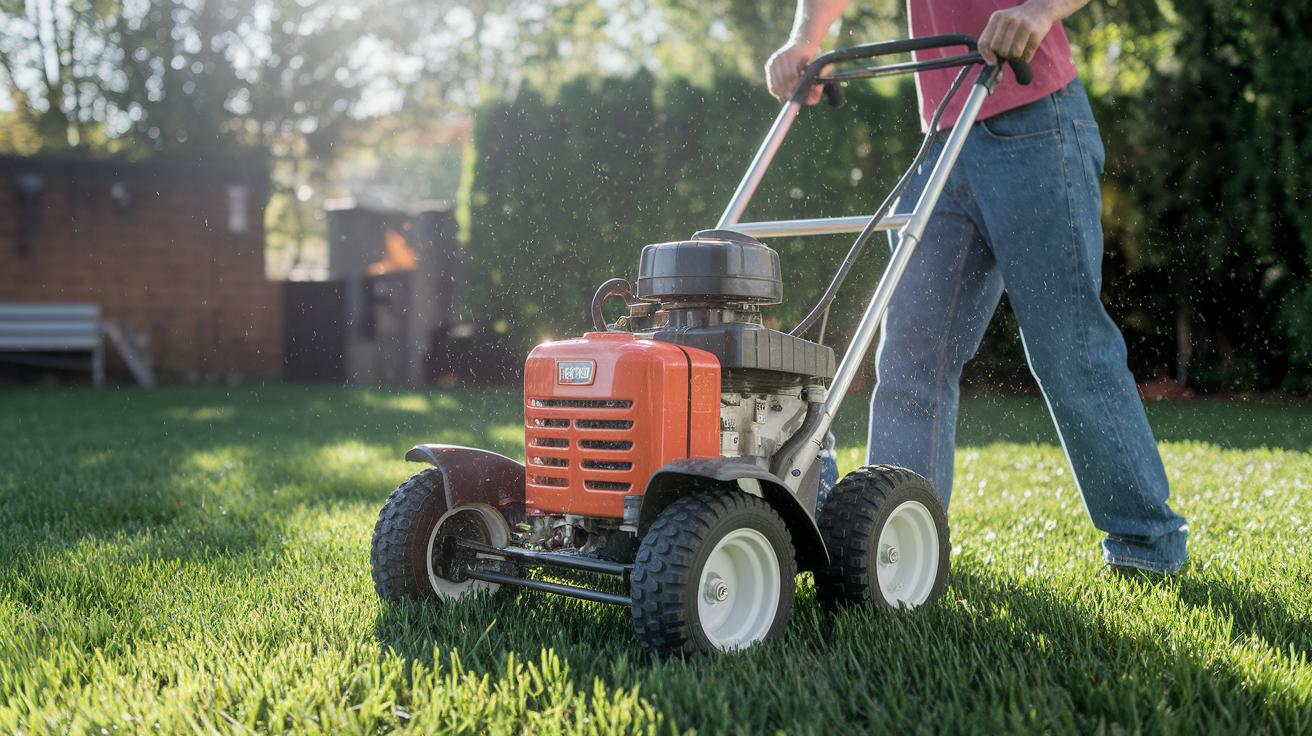
You know how hard it is to dig holes by hand. Power aerators (machines that poke tiny holes in soil) take away the sweat and make the job fast, especially if your yard is medium or large. Let’s walk through each kind, what you’ll do, and a few tips to keep them running smooth.
Corded Electric Aerators
Corded electric aerators plug into an outlet and stay pretty quiet. You push it along while the tines (spike-like teeth) spin through your lawn. The cord limits how far you can go, so plan your route or use an outdoor extension cord. These work great on 2,000- to 5,000-square-foot lawns. When you’re done, wipe the tines clean and neatly coil the cord. For a simple step-by-step, see how to do lawn aeration.
Battery Powered Aerators
Battery powered aerators let you roam free, no cord tripping you up. They run about 30–60 minutes on a full charge and hum instead of roar. If you have a big yard, keep a spare battery handy so you can switch and keep going. After each use, wipe the contacts and store batteries in a cool, dry spot. Easy-peasy.
Gas Powered Aerators
Gas powered aerators pack the most punch for lawns over 5,000 square feet. You’ll mix fuel or simply pour in straight gas, check the oil, and down the road swap spark plugs (tiny parts that make the engine fire). These machines chew through hard-packed soil with almost no pushing from you. Just remember to tune them up each season so they don’t leave you stalled.
Self-Propelled Walk-Behind Aerators
If pushing makes you wince, self-propelled aerators are your friend. They use a gas engine to pull themselves forward, you just steer. Most let you pick how deep the tines go, too. Before each use, give the drive sprockets a little grease, tighten any loose belts, and make sure safety levers click into place. You’ll feel like you’re on autopilot.
Tow-Behind Aerators
Tow-behind aerators hook right onto a garden tractor or ATV. You simply drive at a walking pace and the comb-style tines cover wide swaths of lawn in one pass. Perfect for very large plots. Once fall comes, drain the fuel or battery from your tractor, hose off mud from the hitch and tines, and you’re set for winter storage.
Making the Call: Renting Versus Buying Aeration Tools
Have you ever waited for a crisp spring morning to poke holes in your lawn? If you only punch holes once a year, renting a core aerator (machine that pulls out little plugs of soil) for 35-50 dollars a day can feel like a steal! You skip the tool heap in your garage and dodge any upkeep. Just grab it, breathe in the fresh grass scent, and be done!
But if you’re eyeing two turns at aeration each year, buying might end up cheaper. A hand-push aerator (tool you roll over your yard) costs under 100 dollars. A gas or electric power aerator (engine-driven tool) sits in the 300-800 dollar range. Let it live in your shed, and you’ll save on rental fees over time.
And owning your own machine means you set your schedule, no need to juggle booking deadlines. Sure, you’ll need to find space for it. And you’ll sharpen the tines (long metal spikes) or swap blades yourself. A quick tune-up here, a little wipe-down there, it’s part of the deal.
By the way, my cat somehow loves batting those little soil plugs when I’m done. Um, yard life.
Looking for the best aerator under 500 dollars? A sturdy manual core aerator can be your sidekick for small yards. Think about how big your lawn is and how often you’ll run the tines (once or twice?). Then choose between a smooth rental day or a trusty tool that’s always ready for your weekend plans.
Care, Maintenance, and Post-Aeration Practices
And when you’ve poked holes in your lawn (that’s aeration, making tiny tunnels for air and water), your tools need a little TLC. First, scrape or hose off clumps of soil on each spike (the pointed bit) and tine (the metal prong). Then drip a few drops of light oil on every moving joint so nothing sticks next season. Once a year, check those tines, swap any bent or dull ones, and tuck your aerator gear into a dry spot like a garage shelf or a shed hook.
Now your lawn’s ready for extra love. Roots have clear paths like an open road. For the next one to two weeks, water deeply every other day, letting cool water seep through the fresh holes. While the soil feels soft, sprinkle grass seed over thin patches (that’s overseeding, spreading seed to fill bare spots) and press it in gently with the back of a rake.
When you spot tiny green sprouts, it’s fertilizer time. Dust on a slow-release blend (feeds roots slowly so they don’t burn) to help each new shoot grow strong. No sprinting. No roughhousing. Just patience. Keep off the grass for at least two weeks.
Stick with this aftercare and watch your turf bounce back green, thick, and tough.
Final Words
In the action: We kicked off with a quick decision guide helping you pick the right tool, manual core aerators for small patches under 2,000 sq ft and electric or gas machines for larger lawns. Then we dove into manual options, motorized aerators, and weighed renting versus buying.
We wrapped up tool care and post-aeration steps like watering and overseeding, giving you a clear path forward.
Choose your favorite tools for lawn aeration, give your turf some breathing room, and watch it thrive. You’ve got this.

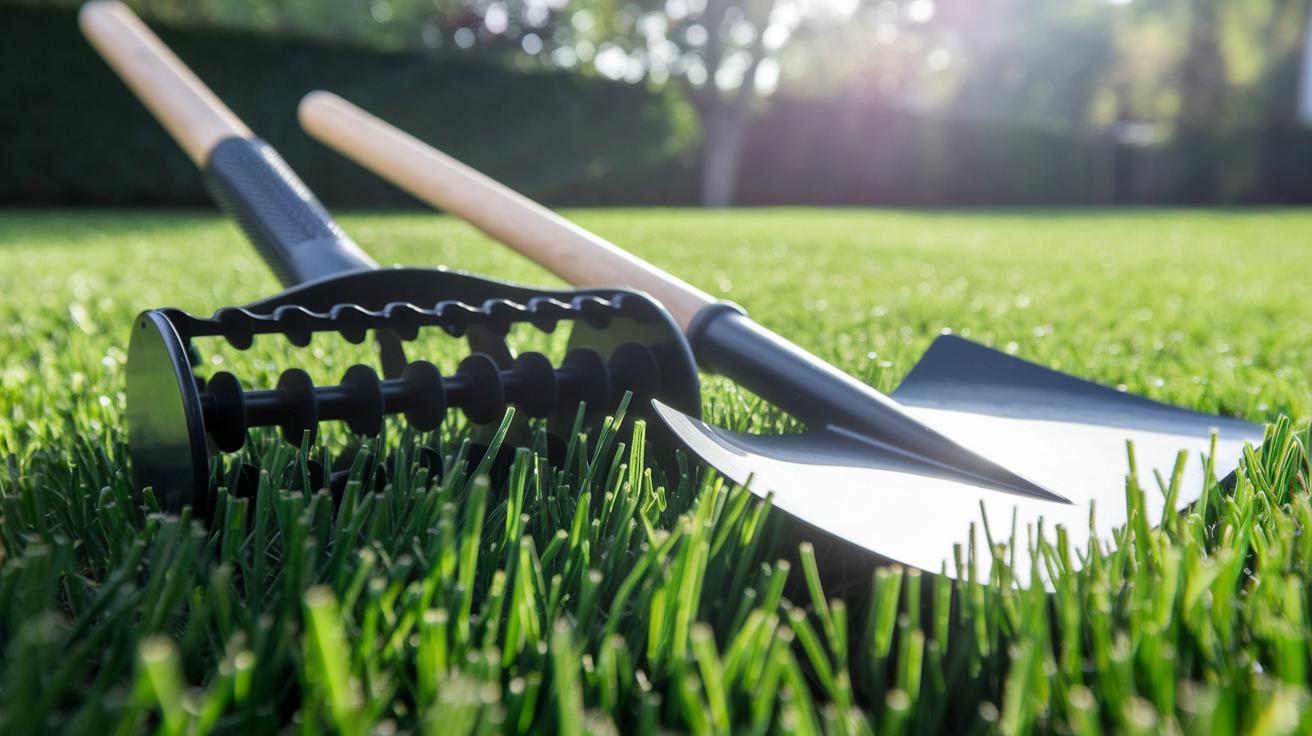
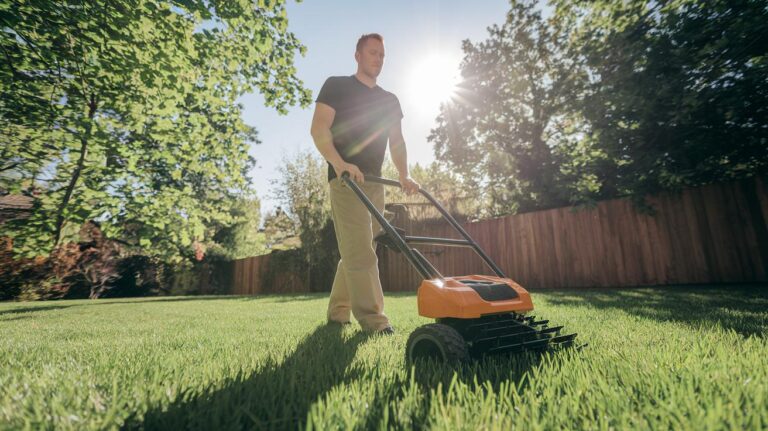
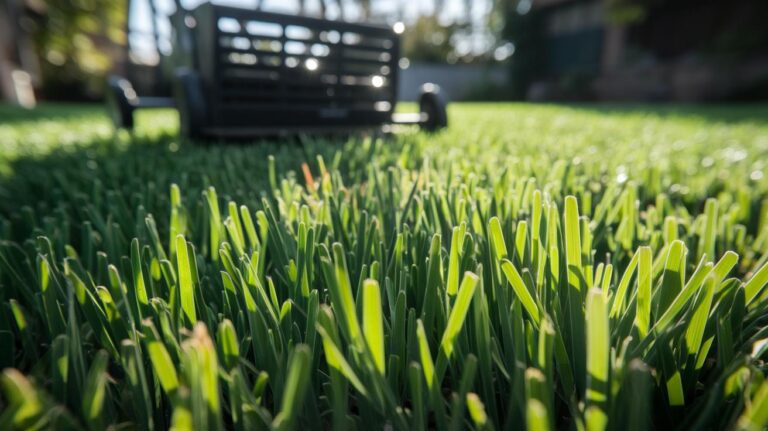
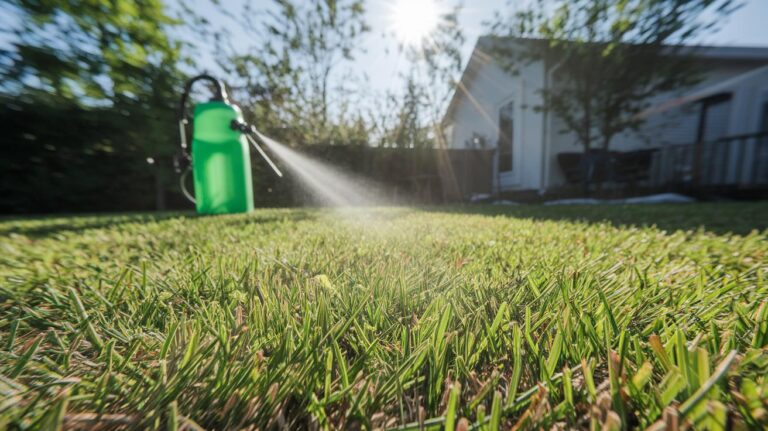
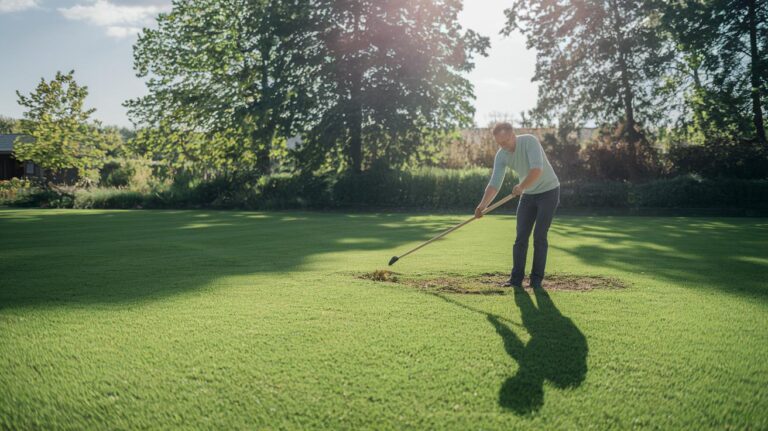
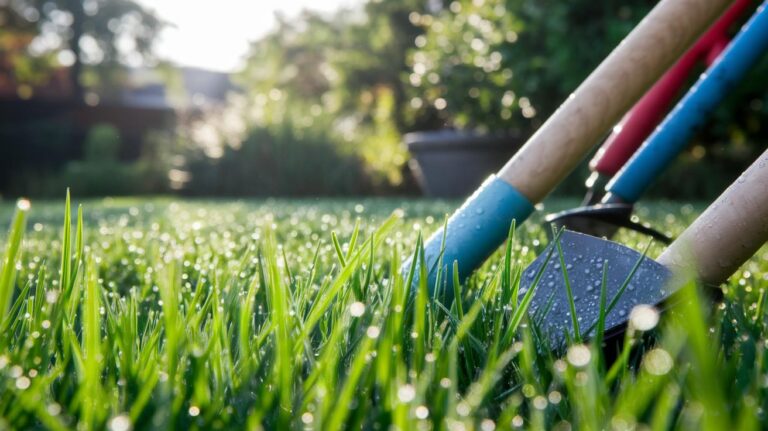

One Comment